Houston Chronicle writer, Kathy Gibson, began her article, Shoe Obsession Disorder: “Contrary to popular belief, Cinderella’s stepsisters were not desperate for Prince Charming — they were desperate for her glass slipper.“
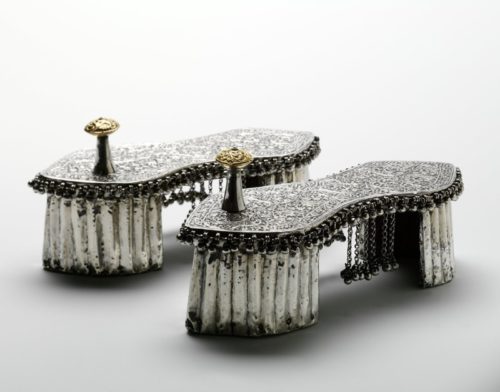
Pleasure & Pain
It is a matter of fact. A fine shoe is an essential part of an outfit.
You can basically rock any look with the right pair of shoes. From vertiginous heels to ballet flats and ankle boots, shoes and particularly designer shoes, cater to every occasion.
Beside their obvious function – to protect the feet – shoes serve a variety of other functions as well. They convey status, enhance sex appeal or indicate membership in a particular “style tribe”. Quoting from French shoe designer Christian Louboutin, it can be claimed that, “shoes are not an accessory; they’re an attribute.”, an inherent part of someone.
The shoe choices – high heels, sandals, boots or sneakers – express social status, gender identity, sexuality, or conformity.

Christian Louboutin 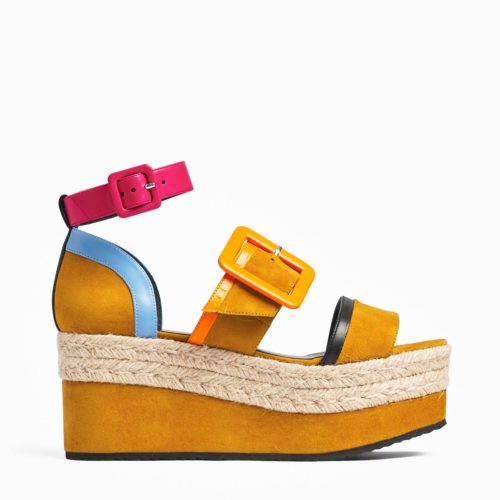
Pierre Hardy
Most women will tell you that they love their shoes because of the way they make them feel. Heels may make you feel uncomfortable, however they make you taller which in turn makes you confident. Shoes can be instruments of self-torture at times (blisters, burns, bony growth, sores, bruised toenails ) but then who cares about a little pain when you can look sooo good….Pain is not the goal, it is just an unfortunate side effect. According to podiatric surveys more women than men suffer pain from their footwear, and similarly, more women than men say they’ll suffer for the sake of their shoes.
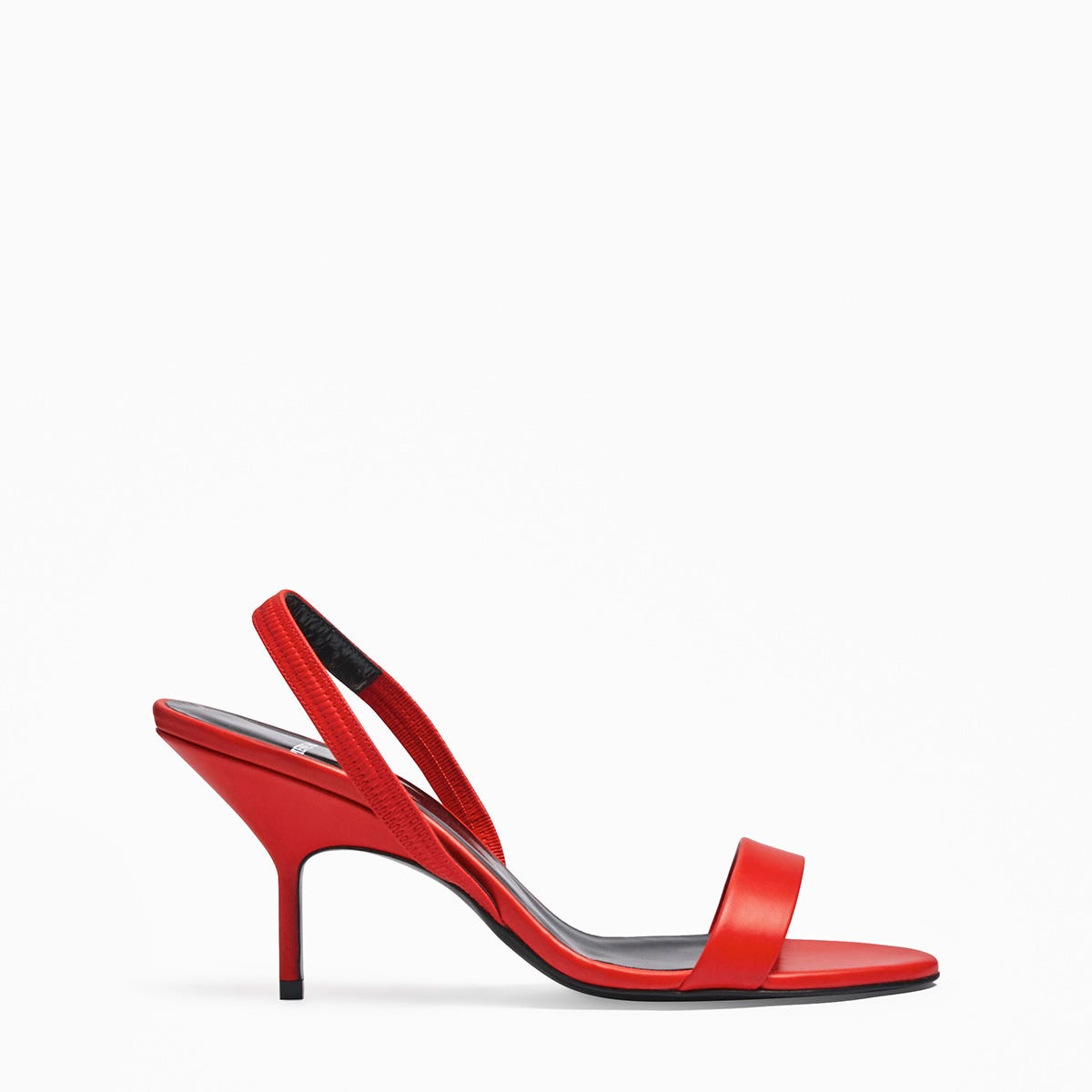
Pierre Hardy 
Tod’s 
Pierre Hardy 
Prada 
Manolo Blahnik 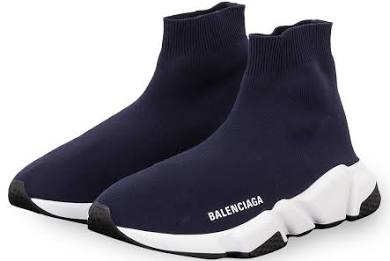
Balenciaga
The heel has come to be the icon of feminine allure and even female power. In a research conducted in 2014 by Nicolas Gueguen, it was noted that if you want to attract a man, persuade a man, or get his help with something, then you may want to consider a high heel shoe to do the job. Even in a business setting, you may get the agreement of more of the men in the room with high heels on.

Jimmy Choo 
Christian Louboutin 
Jimmy Choo 
Nude Patent
Red carpets are another area where the policy regarding heels is more of an unspoken rule. Whether Oscar night, the Met Gala or the iconic steps of Cannes Film Festival, heels are part of the strict dress code. It’s become clear that women wearing heels are more welcome than those wearing flats. High heels do make long, slender limbs look beautiful and they do give height and elegance to those who can wear them with grace. On the other hand they can emphasise a broad beam, thicken a muscular calf and turn an ordinary gait into a teetering, crippling shuffle.
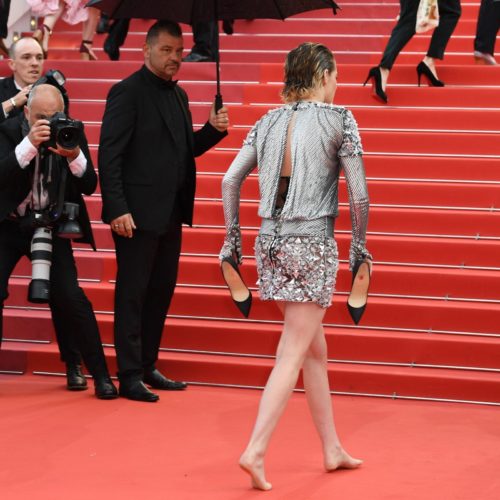
Kirsten Stewart 
Julia Roberts
But for some, wearing heels or rather not wearing heels is simply a way of making a statement. Kristen Stewart made headlines at the Cannes Film Festival in 2018 when she took off her heels at the Premier of Blackklansman. Kristen walked the iconic red carpet in an embellished silver Chanel minidress and Christian Louboutin heels. Before walking up the stairs, Kristen proceeded to remove her black heels and hold them in her hands, making her feelings about the rule very clear. Another blatant act of rebellion was taken by Julia Roberts in 2016. When Roberts lifted up the skirt of her Armani Privé gown at Cannes, she had a huge surprise waiting underneath. The actress was barefoot.
Funnily enough the notion of pain associated to shoes is not a modern creation led my vain fashionistas. Interestingly, it wasn’t until 1818, that the right shoe was invented. Until that time, there was no distinction between shoes made for left or right feet. The first pair of right and left footed shoes were made in Philadelphia. Obviously, shoes weren’t made for comfort up to this point either.
In the 16th century during the time of the Ottoman Empire, women wore stilt shoes that could reach as high as 28.5 cm. Originally used to raise the wearer above the heated floor of the hammam, this footwear became a potent symbol of wealth and status. The more difficulty the wearer had to walk, the more maids were needed to accompany her thus allowing her to off her wealth. In their extreme hight and decoration, bath clogs (or QABAQIB as they are known) reinforced social divisions.
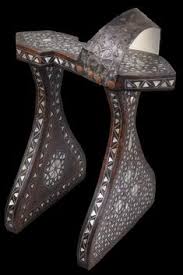






The Victoria and Albert Museum in London, showcased in 2015 an extraordinary exhibit called « Shoes : Pleasure and Pain ». The visitor explored the history of shoe design spanning more than 3000 years showing the chronological progression of shoe height, heel shape and materials, from Roman sandals to sculpted stiletto and the classical wellington boot. We discovered how styles that we consider to be modern, to have in fact been in and out of fashion across the centuries.
Shoes may be an obsession to women, shoes are a passion in France, especially in Paris. As the President of the French Federation of Shoes, Jean-Pierre Renaudin explained at the 2012 Paris exhibition « Shoes – A French Passion »
“The French, compared to other countries in Europe and around the world, spend the most of their hard-earned money on shoes,”
“On average, French people buy between six and seven pairs per year. Germans buy four to five, Italians from five to six and us, around seven. So there is really a passion in France for shoes and we have a long history with this product.”
Jean-Pierre Renaudin
Passion or obsession, pleasure & pain, shoes do not leave anyone indifferent. 90 percent of women admit to loving footwear. When Net-a-Porter hosts a Christian Louboutin flash sale, all shoes sell within a couple of hours. This kind of ravenous purchasing behavior is unique to footwear according to the site’s director Stephanie Phair.
“Vanity, definitely my favourite sin” are the final words spoken by the Devil (Al Pacino) in the closing scene of the “Devil’s Advocate”. Attention all shoe lovers of the world.
Views: 608


